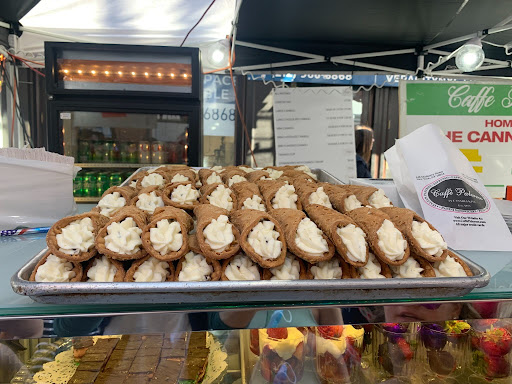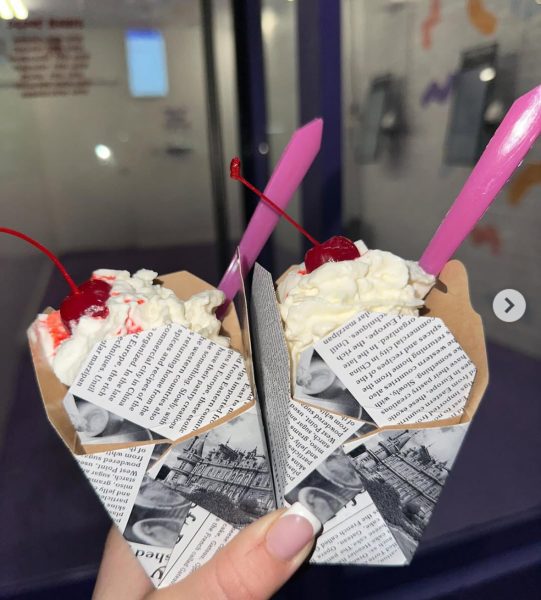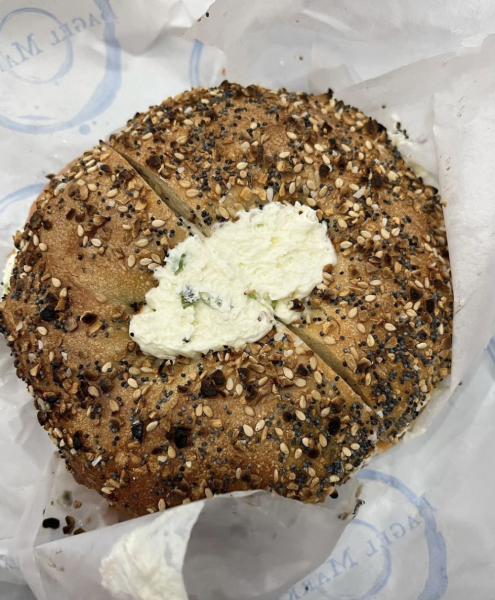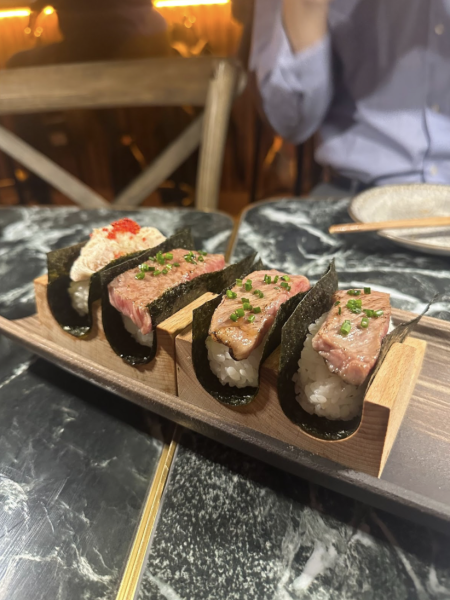San Gennaro Returns to Little Italy

Every year the San Gennaro festival occurs in Manhattan’s Little Italy, celebrated with food and festivities. (Courtesy of Joseph Roucka for The Fordham Ram)
It can be smelled before anything else. For 11 days, from Sept. 16 to Sept. 26, the streets of Manhattan’s Little Italy are blessed with the pleasant aromas of meatballs, arancini, ziti, lasagna, deep fried ravioli and just about any other Italian-adjacent meal that can be prepared out of cheese, tomato and carbs — all drenched in either marinara or vodka sauce. The Feast of San Gennaro! A map is hardly required to make it there from the subway station. On every street corner, there are mountains of cannoli from what seems like every pasticceria in the neighborhood lay, waiting to be devoured by the festival goers, shameless as they consume the cream-filled pastries after their too recent lunches.
Though some of the biggest draws are the food eating competitions, ranging from meatballs to zeppole, the festival is not a culinary one. Since the beginning of the twentieth century, the Feast has been held to honor Saint Gennaro, the patron Saint of Naples. When Italian immigrants flocked to New York, according to the festival’s official website, each region made their settlement on a different street on the Lower East Side. For the Neapolitans, that street was Mulberry, the thoroughfare through which the much anticipated Grand Procession runs. The width of the road is shockingly small, especially with the food booths and restaurants’ outdoor patios spilling into it; however, floats, cars and hordes of people manage to make their way down the 11 blocks taken up by the event.
“The parade is definitely my favorite part of the festival,” said a man coating strawberries with chocolate for his dessert booth. His family owns Da Nico, a restaurant on Mulberry. “Bringing the saint out and classic cars, and this year we’re honoring first responders.” This year marked two decades since 9/11, and first responders were the big honorees, second to San Gennaro himself. The police department’s marching band opened the parade, performing “Summer Nights” on their bass drums and trombones, and the fire department made a spirited appearance on a pristine fire engine.
When asked about this year’s festival compared to those of previous years, he went on to say that “it’s a much younger crowd, not as many older people, like a turnover.” When struggling to find the right way to describe it, he claimed that “there’s more people buying one cannoli than a dozen, if you know what I mean.”
This year’s event is also significant because of its hiatus last year due to the COVID-19 pandemic. “It’s nice that there’s an event where it just feels normal,” said Kara DiGiacomo, festival attendee and resident of the Lower East Side. It is never-ending excitement. Everyone is out and about, walking the old streets, enjoying music together and inquiring with one another about where they obtained their fried rice balls. “I love seeing everybody out again,” said a smiling vendor selling magnets, candles and keychains at his booth. “I’m having a great day.” Any exhaustion felt after almost two weeks of working was overrun by the excitement of the festival.
The famous statue of the saint is the titular image of the festival. It makes its way down Mulberry, adorned with dollar bills, carried on the backs of parade participants, glorified by onlookers. The image is a blast from the past against the narrow streets, compact brick buildings and skinny fire escapes of the neighborhood, like the scenes in “The Godfather”— that is, if you ignore the iPhones taking pictures and contemporary fashion trends. You would expect to look up and see young Vito Corleone running across the rooftops of tenement buildings with the crowded festival taking place below, accordions and violins making themselves heard over the excitement. The fact that the celebration has held up for close to a hundred years is beyond spectacular. The Feast of San Gennaro is not only important because it honors the ancestors, culture and traditions of countless Italian Americans, as well as a saint who dates back to the first century, but it is a chance for an entire city to come together after a period of such great separation.











































































































































































































